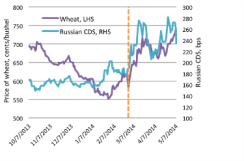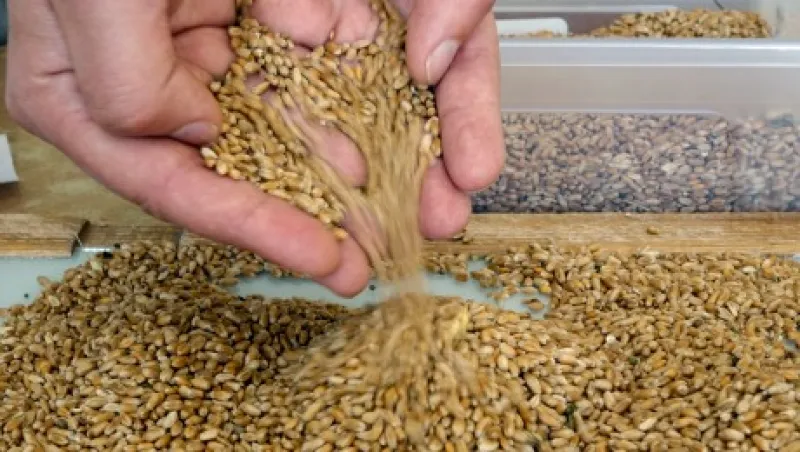So far, trading in the commodities markets appears to be largely unaffected by the Ukraine crisis — at least at first glance. Based on Brent crude futures, oil prices are 1 percent lower than when the tension between Russia and Ukraine erupted in late February, despite Russia’s being the largest oil producer in the world. Even in European natural gas, of which roughly 30 percent of supplies comes from Russia, prices have actually tracked substantially lower despite some initial spikes in early March as warm weather tamped demand. We see several potential reasons for this. But the bigger picture is that commodities traders haven’t been very concerned about supply disruptions from Russia. The same is not true, however, for traders in commodities that depend on Ukraine for a large share of supply. Those commodities are wheat and corn.
If you want an outside gauge of whether the market is more or less concerned about events in Russia and Ukraine, you can look at wheat prices. Ukraine is a major supplier of grains: The East European country represents on average roughly 7 percent of global wheat exports and 17 percent of global corn exports. Since late February grain prices have responded to nearly every up and down of the crisis (see chart 1). Wheat is up 21 percent, and corn is up 10 percent.
So why are market participants more concerned about supply disruptions from Ukraine? One reason is likely related to the disruption of shipping through Ukrainian ports like the Black Sea city of Odessa, an important hub for global grain exports. Another reason may be the difficulties that both exporters and farmers have faced obtaining financing to conduct their normal operations. In addition, in the event of a Russian invasion, it would seem reasonable for Ukrainian farmers or local governments to hoard grain and food supplies.

What does this mean for future prices? Absent the events in Crimea, we see the wheat and corn markets well supplied globally. We see little evidence that this will change over the coming several months. High grain prices during the past year have led to large crops and the shoring up of global inventories. There is no doubt that this year’s winter wheat crop in the U.S. suffered some damage as the crop went from winter dormancy to an excessively hot and dry spring across the southern Great Plains states. Crop conditions in Europe are much more normal, however. Corn planting is progressing relatively slowly, but given the developing El Niño weather pattern, we expect limited downside to yields. El Niño years are associated with cooler and wetter summers, which reduce the tail risk of a materially smaller corn crop like last year’s.
The combined impact of weather conditions in the U.S. and geopolitical uncertainty in the Black Sea region has resulted in a large premium on U.S. grain prices. Compare, for example, the FOB, or free-on-board, market prices(the cash offer at port for global wheat). Australian offers for high-grade wheat are approximately $60 per metric ton, or 20 percent cheaper than the same grade of U.S. wheat. This shows how expensive the U.S. offer has become to global buyers. We expect that over the coming months, the risk premium embedded in U.S. as well as global grain prices is likely to recede as the forecast for the U.S. wheat and corn yields becomes more certain.
Our forecast for falling grain prices over the next few months assumes that the Russia-Ukraine situation doesn’t escalate. How do we reflect this fundamental view in our portfolios? Implied volatility from the wheat and corn options market is below 30 percent, which is well under the average of roughly the past five to 10 years. Since the end of February, volatility has risen by roughly 3 percentage points, far less than the impact on the outright price of the commodity.
Investors looking to take a view on the future price of wheat or corn should do so through the options market. In this case, we think that being long on wheat puts is a solid way to implement our short wheat strategy.
Nicholas Johnson and Gillian Rutherford are both portfolio managers focusing on commodities at PIMCO's Newport Beach, California, and London offices, respectively.






